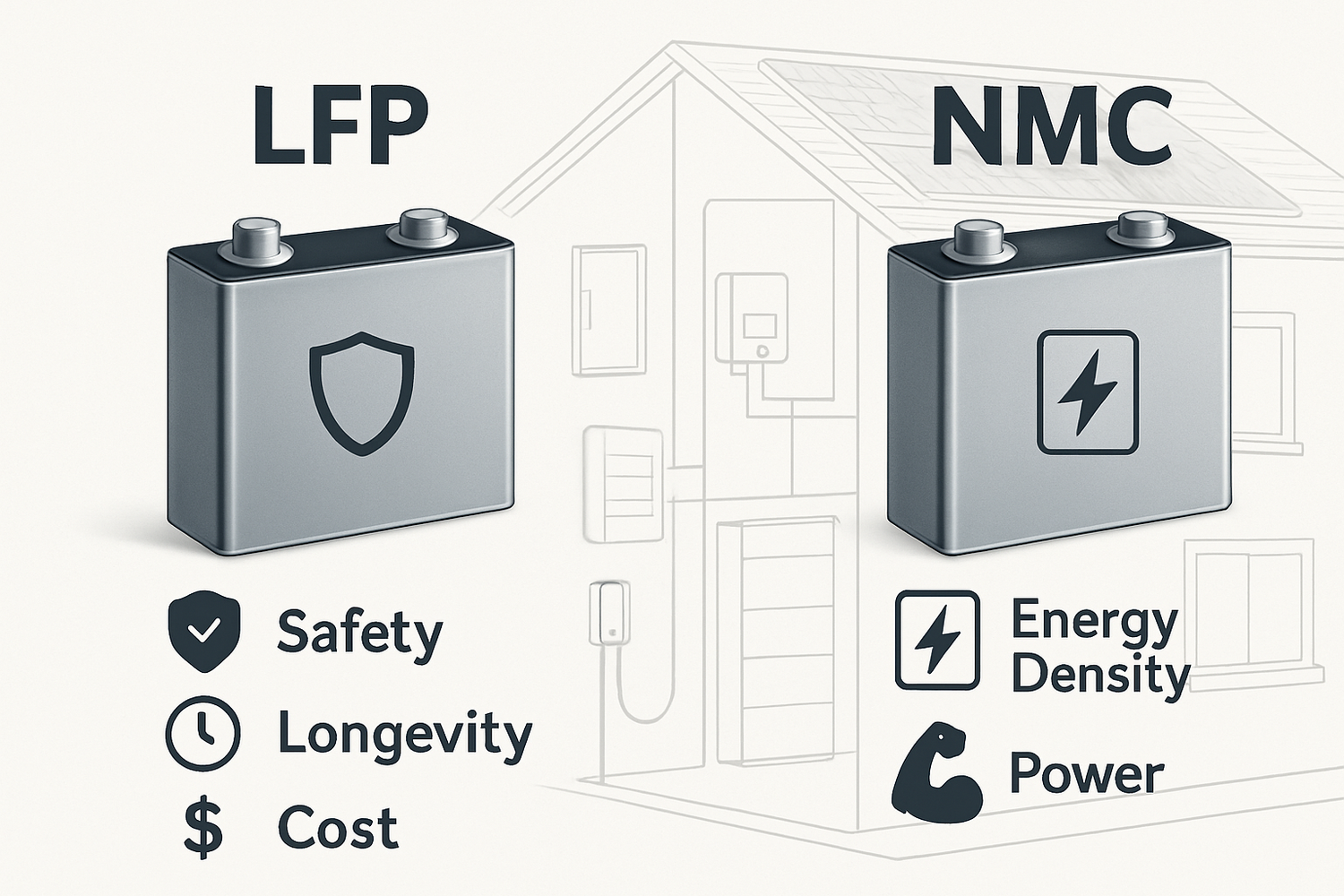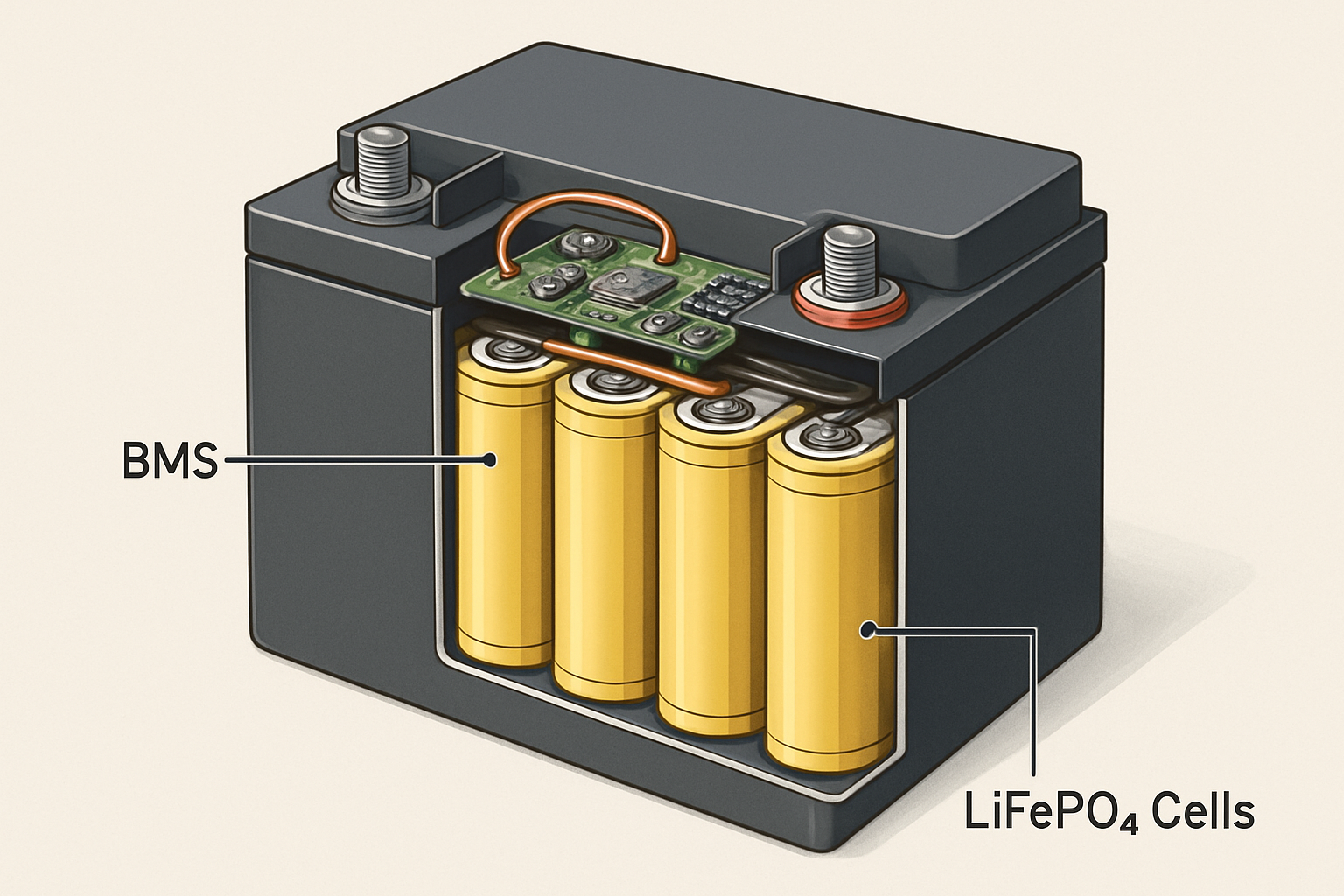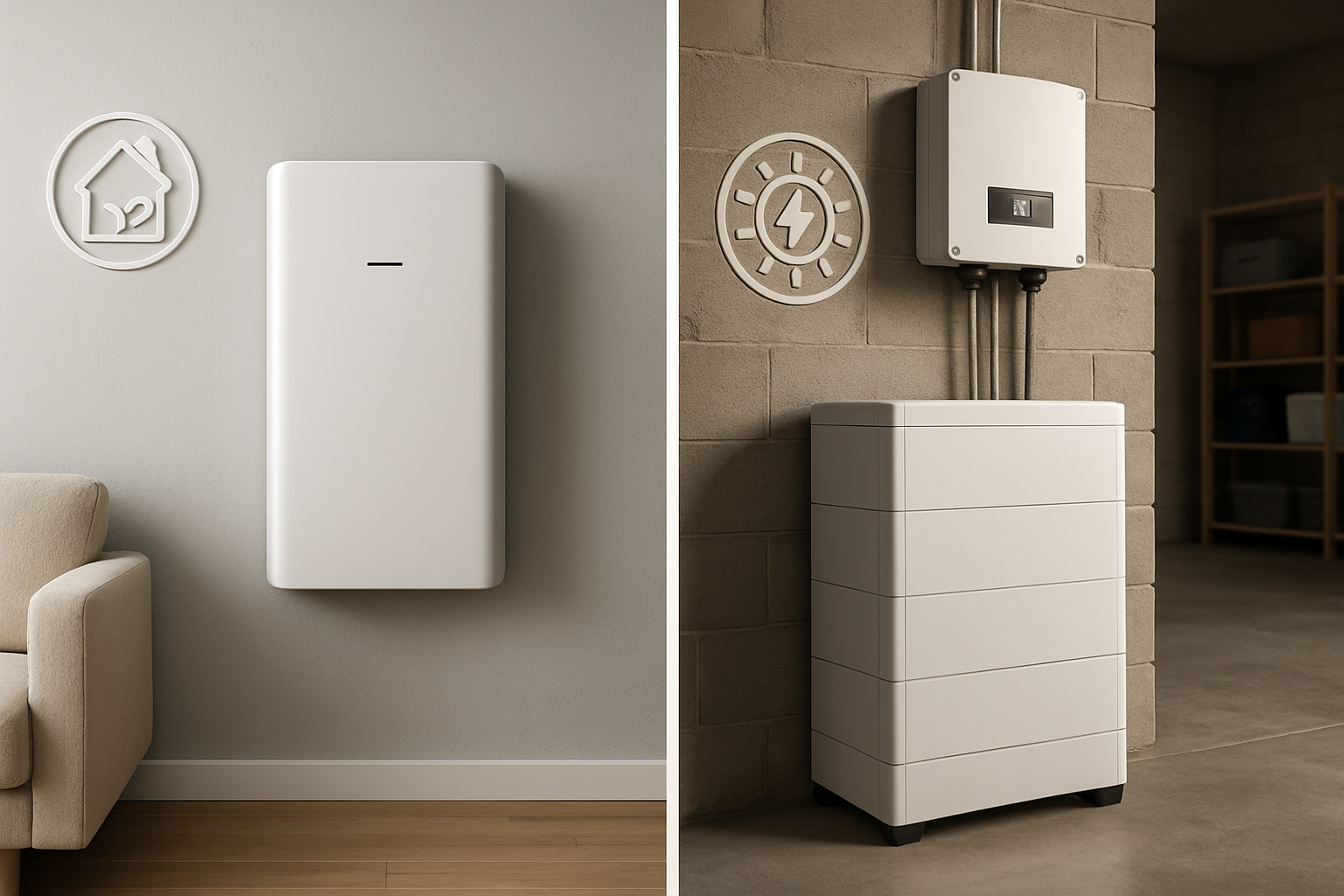When selecting a lithium-ion battery for a home energy storage system, the chemistry inside the cell is a critical detail. The two most prominent chemistries are Lithium Iron Phosphate (LFP) and Nickel Manganese Cobalt (NMC). While both power modern life, they have fundamental differences that directly impact safety, lifespan, and performance. Understanding these distinctions is key to building a reliable and secure energy storage solution.
Understanding the Core Differences: LFP and NMC Chemistry
The foundation of a battery's behavior lies in its chemical makeup, specifically the cathode material. This is where LFP and NMC diverge significantly, leading to their distinct characteristics.
What is LFP (Lithium Iron Phosphate)?
LFP batteries use lithium iron phosphate (LiFePO4) as the cathode material. This chemistry is known for its exceptionally stable olivine crystal structure. The strong covalent bonds between the phosphorus and oxygen atoms create a robust framework that can withstand high temperatures and stress without breaking down. This inherent stability is the primary reason for LFP's reputation for safety.
What is NMC (Nickel Manganese Cobalt)?
NMC batteries utilize a combination of Nickel, Manganese, and Cobalt Oxide (LiNiMnCoO2) for their cathode. This layered oxide structure allows them to store more energy in a smaller space, giving them a higher energy density. The ratio of the three metals can be adjusted to prioritize either energy density or power output. However, this structure is less stable at high temperatures compared to LFP's olivine structure.
The Critical Factor: Thermal Stability and Safety
The most important safety concern with any lithium-ion battery is thermal runaway. This is a chain reaction where an increase in temperature causes the cell to release more energy, which in turn increases the temperature further, potentially leading to a fire.
LFP's Superior Thermal Stability
LFP chemistry demonstrates exceptional resistance to thermal runaway. The robust olivine structure does not begin to break down until it reaches very high temperatures, typically around 270°C. Even under conditions like overcharging or short-circuiting, LFP cells are far less likely to release oxygen, a key ingredient for combustion. According to a report by the International Energy Agency, LFP cathodes offer increased safety due to higher thermal stability. This makes LFP an excellent choice for a home battery storage system, where safety is paramount.
NMC's Safety Considerations
NMC batteries have a lower thermal runaway threshold, generally around 210°C. The layered chemical structure is more prone to breaking down and releasing oxygen at elevated temperatures. While this presents a higher risk compared to LFP, it is important to note that all modern NMC battery packs are equipped with a sophisticated Battery Management System (BMS). A BMS monitors cell temperature, voltage, and current to prevent conditions that could lead to thermal runaway. Still, the underlying chemistry of LFP provides a more fundamental safety advantage.
Performance Metrics Beyond Safety
While safety is a top priority, other performance factors like lifespan, energy density, and cost also influence the choice between LFP and NMC.
Lifespan and Durability
LFP batteries consistently outperform NMC in terms of cycle life. An LFP battery can typically endure up to 10,000 charge and discharge cycles before its capacity degrades significantly. In contrast, NMC batteries usually offer up to 5,000 cycles. This data is supported by research from the International Renewable Energy Agency, which highlights LFP's longer lifetime. This durability makes a 12v 100ah LiFePO4 lithium battery a long-term, cost-effective investment for solar energy storage.
Energy Density and Application
NMC has the advantage in energy density. It can store more energy per kilogram, which is why it has been a popular choice for electric vehicles (EVs), where weight and space are major constraints. For stationary applications like a home energy storage system, energy density is less critical. The slightly larger size and weight of an LFP lithium battery storage system are easily accommodated.
Cost and Material Sourcing
LFP batteries are generally more affordable to produce. This is because they do not contain cobalt, a rare, expensive, and often controversially sourced material. The IEA has noted that Chinese LFP batteries can be around 30% cheaper than their NMC equivalents. By avoiding cobalt, LFP offers a more stable supply chain and a lower price point for consumers.
A Comparative Table: LFP vs. NMC at a Glance
| Feature | LFP (Lithium Iron Phosphate) | NMC (Nickel Manganese Cobalt) |
|---|---|---|
| Safety | Excellent (High thermal stability) | Good (Requires advanced BMS) |
| Thermal Runaway Temperature | ~270°C | ~210°C |
| Cycle Life | Up to 10,000 cycles | Up to 5,000 cycles |
| Energy Density | Lower (90-160 Wh/kg) | Higher (150-220 Wh/kg) |
| Cost | Lower (Cobalt-free) | Higher (Contains cobalt and nickel) |
| Common Applications | Stationary energy storage, buses | Electric vehicles, consumer electronics |
Making the Right Choice for Your Energy Needs
When choosing between LFP and NMC, the application dictates the priority. For stationary energy storage solutions, the priorities are clear: safety, a long lifespan, and cost-effectiveness. LFP chemistry excels in all these areas. Its inherent thermal stability provides peace of mind, while its extended cycle life ensures a reliable source of power for years. The lower cost also makes achieving energy independence more accessible. To fully grasp how these metrics translate into real-world benefits, reviewing the ultimate reference on solar storage performance can provide deeper insights into system design and efficiency. For applications where minimizing weight and size is the top goal, NMC remains a viable option.
Final Thoughts
The evolution of lithium-ion technology has provided powerful tools for managing energy. While NMC chemistry has enabled the growth of portable electronics and electric vehicles, LFP chemistry has emerged as the clear frontrunner for safe and durable stationary storage. For homeowners and businesses looking to invest in a solar energy storage system, an LFP-based solution like a 12 volt 100ah lithium battery offers an optimal blend of safety, longevity, and value. As technology continues to advance, the focus on stable and reliable chemistries will only grow, further cementing LFP's role in a clean energy future.
Frequently Asked Questions
Is NMC battery chemistry unsafe?
NMC chemistry is not inherently unsafe, but it does have a lower thermal stability threshold compared to LFP. Modern NMC batteries depend on advanced Battery Management Systems (BMS) to monitor conditions and operate safely. The fundamental chemistry of LFP, however, provides a higher degree of inherent safety.
Why is LFP considered safer than NMC?
LFP's superior safety stems from its stable olivine crystal structure. The powerful chemical bonds are highly resistant to breaking down, even at extreme temperatures, which makes LFP batteries far less prone to thermal runaway.
Does LFP or NMC last longer?
LFP batteries typically have a significantly longer lifespan. As noted in an IRENA innovation outlook, LFP chemistry can achieve up to 10,000 cycles, while NMC is generally rated for up to 5,000 cycles under comparable conditions of use.
Is LFP technology cheaper?
Yes, LFP batteries are generally more affordable. A key reason is that they do not use cobalt, an expensive material with a volatile supply chain. An IEA report highlights that LFP batteries can be about 30% less expensive than their NMC counterparts, making energy storage more accessible.





Leave a comment
All comments are moderated before being published.
This site is protected by hCaptcha and the hCaptcha Privacy Policy and Terms of Service apply.